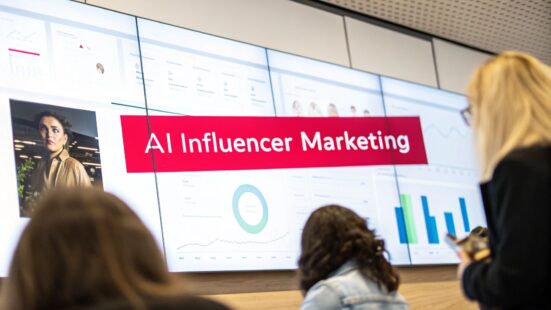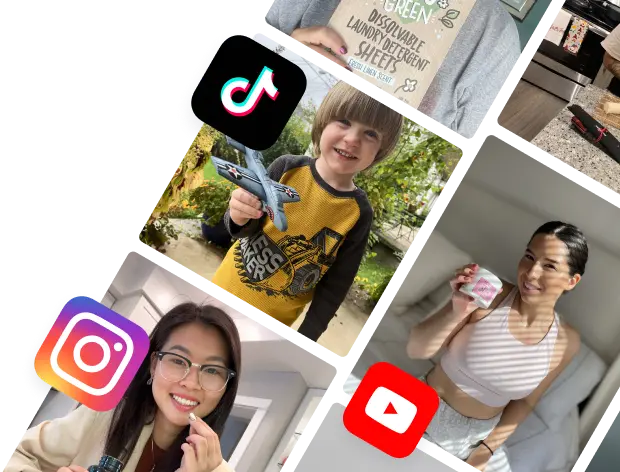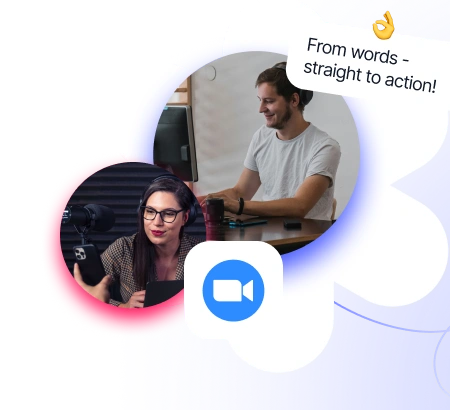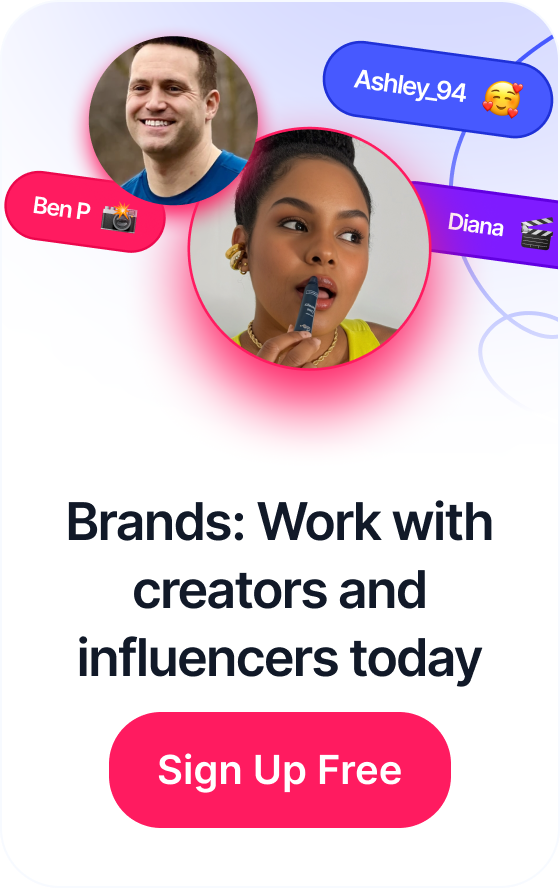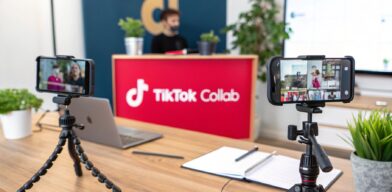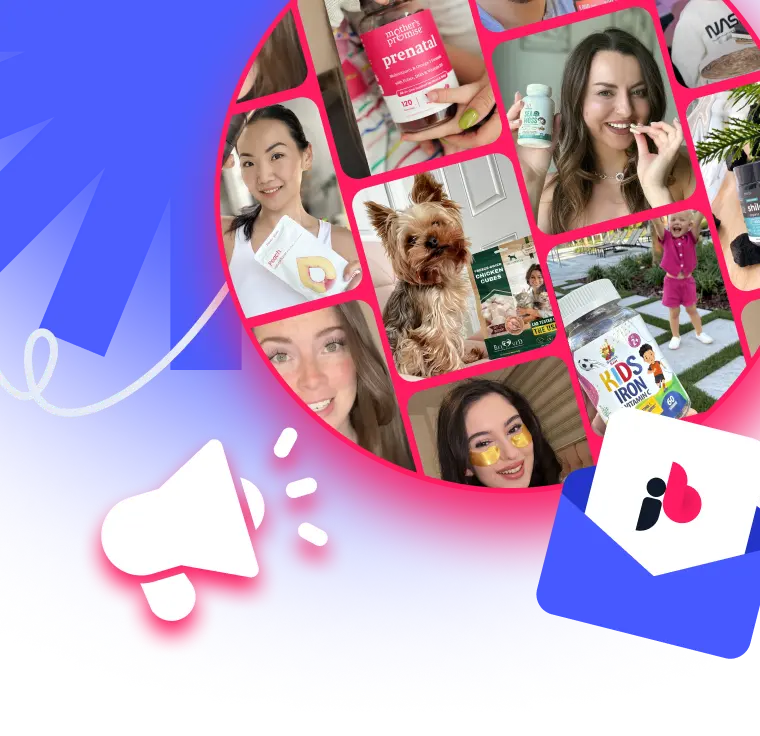 A Guide to Omnichannel Marketing Strategy
A Guide to Omnichannel Marketing Strategy
AI influencer marketing isn't just a buzzword; it's a fundamental shift in how brands connect with creators. Think of it as upgrading from a paper map and a hunch to a real-time GPS for your campaigns. It uses artificial intelligence to move beyond guesswork and into data-driven precision, allowing you to find the perfect creator, predict campaign success, and actually prove your ROI.
Table of Contents
The End of Guesswork in Influencer Marketing
Let’s be honest. The old way of finding influencers was a grind. It meant endless scrolling through social feeds, relying on follower counts that could be easily faked, and making decisions based on gut feelings. It was like searching for a needle in a haystack—a slow, painful process that often led to partnerships that were tough to measure and even harder to scale.
That manual-first, hope-for-the-best approach is quickly becoming a thing of the past. AI steps in as a powerful magnet, pulling the most relevant creators from a massive sea of online personalities. It crunches millions of data points in minutes—a feat impossible for any human team—to ensure every partnership is built on a solid foundation of data, not luck.
AI doesn't just find influencers; it validates them. It turns marketing from a game of chance into a science of prediction, making sure your budget is an investment, not a gamble.
From Manual Labor to Automated Precision
The real change here is in efficiency and insight. Instead of spending weeks manually digging through profiles and vetting creators, AI platforms can serve up a curated list of ideal partners in just a few hours. This frees up your team to focus on what humans do best: building authentic relationships and crafting creative, compelling campaign ideas.
This shift allows for much more sophisticated planning. Decisions are backed by predictive analytics—like forecasting engagement rates or audience response—instead of just intuition.
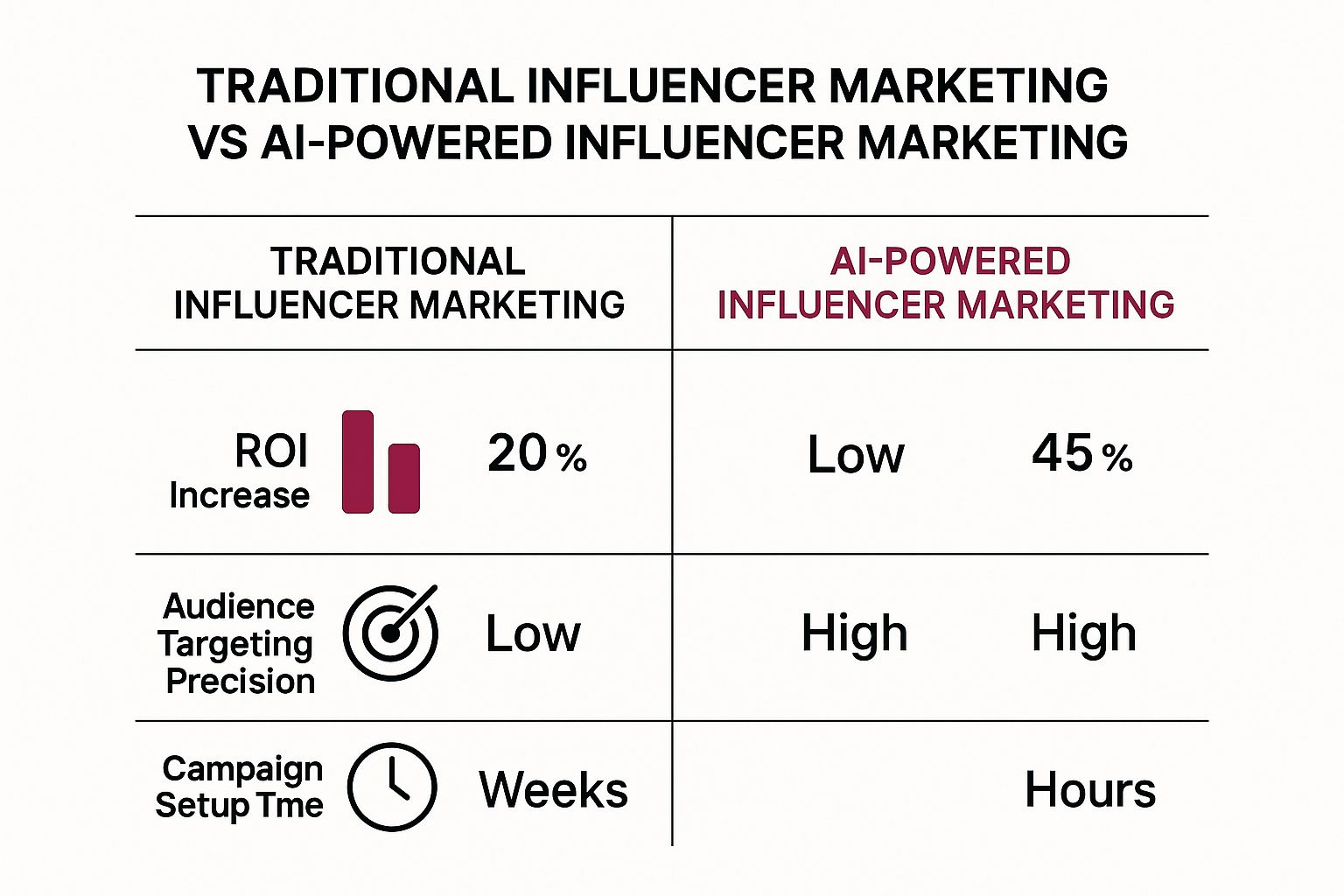
As you can see, the move to an AI-powered strategy delivers some pretty dramatic gains where it counts. It's a critical evolution for any brand that wants to stay competitive.
To really spell it out, let’s break down the key differences between the old way and the new.
Manual vs. AI Influencer Marketing At a Glance
The table below gives you a clear side-by-side comparison of how AI changes the game at every stage of a campaign.
| Process Stage | Traditional Manual Approach | AI-Powered Approach |
|---|---|---|
| Discovery | Scrolling social media, keyword searches, relying on existing networks. Very slow. | Scans millions of creator profiles in minutes based on hyper-specific criteria. |
| Vetting | Manually checking follower authenticity, engagement rates, and past content. | Instantly analyzes audience demographics, fake follower detection, and brand safety. |
| Outreach | Sending one-off emails or DMs, manually tracking responses in a spreadsheet. | Automates personalized outreach at scale and tracks communication status. |
| Campaign ROI | Difficult to track beyond vanity metrics like likes and comments. | Provides predictive analytics on potential ROI and tracks real-time performance. |
| Reporting | Manually compiling data into reports, often weeks after the campaign ends. | Generates real-time, automated reports with deep performance insights. |
The contrast is stark. While the manual approach relies on time-intensive labor and a bit of hope, the AI-powered method is built on speed, data, and measurable outcomes. It's not about replacing marketers, but about giving them superpowers.
How AI Is Redefining Influencer Partnerships
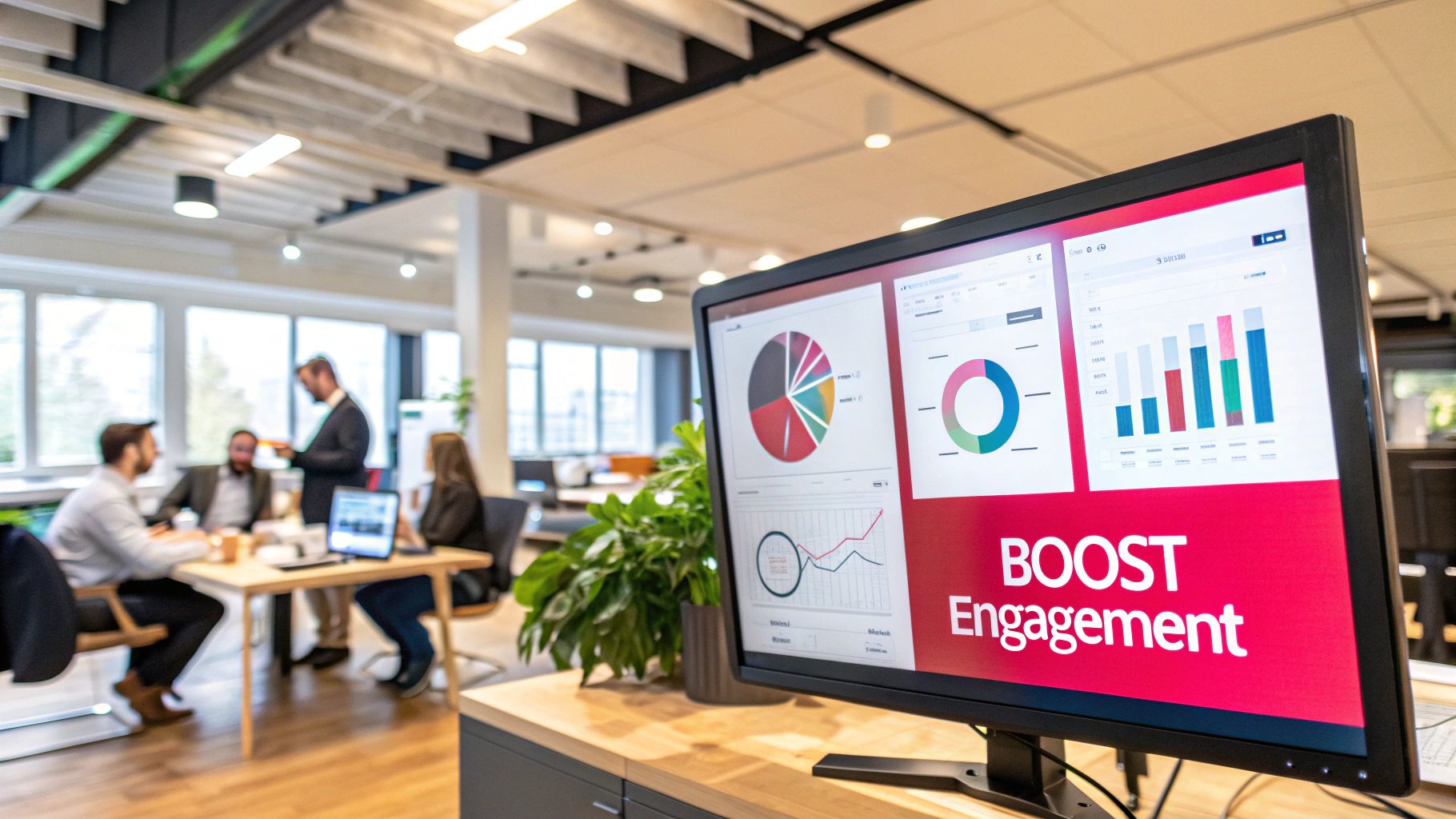
So what does AI influencer marketing actually look like day-to-day? Think of it like having a team of super-smart assistants working for you around the clock. One is a data whiz who sifts through millions of creator profiles to find the perfect match for your brand. Another is a fraud detective who instantly sniffs out fake followers and shady engagement. This isn't science fiction anymore; it's the new reality.
This completely changes the game for marketers. Instead of burning hours on tedious, repetitive work, you can hand off the heavy data lifting to smart systems. This frees you up to focus on what really matters: strategy, creativity, and building real human connections with creators. You get to do more of the work that actually drives results.
The idea here is to augment your skills, not replace you. AI is your co-pilot, giving you the data-driven confidence to back up your gut feelings. It surfaces insights that were once buried in spreadsheets, turning guesswork into a far more predictable process.
Amplifying Human Creativity with Data
The real magic happens when human marketers and AI work together. The machine crushes the quantitative analysis, but it's the marketer who brings the qualitative nuance and creative spark. AI can tell you which influencer has the right audience, but a human touch is needed to decide if their creative style and voice truly vibe with your brand.
This tag-team approach always leads to better, more impactful campaigns. For instance, an AI tool might flag three influencers with nearly identical reach and engagement. But when you actually review their content, you might see that one creator's storytelling is miles ahead of the others and a much better fit for your campaign's goals.
AI gives you the "what" and the "who," but human marketers will always own the "why" and the "how." It's about using technology to make smarter creative choices, not outsourcing creativity itself.
Key Roles AI Plays in a Partnership
When you weave AI into your workflow, it takes over several critical tasks that used to be massive time sinks. This lets your team move faster and with much greater precision.
Here are some of the main jobs that AI tools handle:
- Advanced Discovery: AI looks way beyond simple hashtags and follower counts. It dives deep into a creator's historical content, audience sentiment, and even the visual aesthetics of their feed to find the best possible match for a brand’s very specific needs.
- Predictive Performance: Many platforms can now forecast how well a potential partnership will do. By analyzing a creator’s past performance on similar campaigns, these tools can predict metrics like engagement rate, reach, and even potential ROI before you spend a single dime.
- Fraud Detection: One of the biggest headaches in this industry is paying for fake influence. AI systems are brilliant at spotting red flags—like bot followers, purchased likes, or engagement pods—and protecting your budget from being wasted.
This shift means you spend less time drowning in research and more time building relationships. The result is a much more strategic and effective approach to AI influencer marketing, one that leads to partnerships that deliver real, measurable results.
Finding and Vetting Influencers with AI Precision
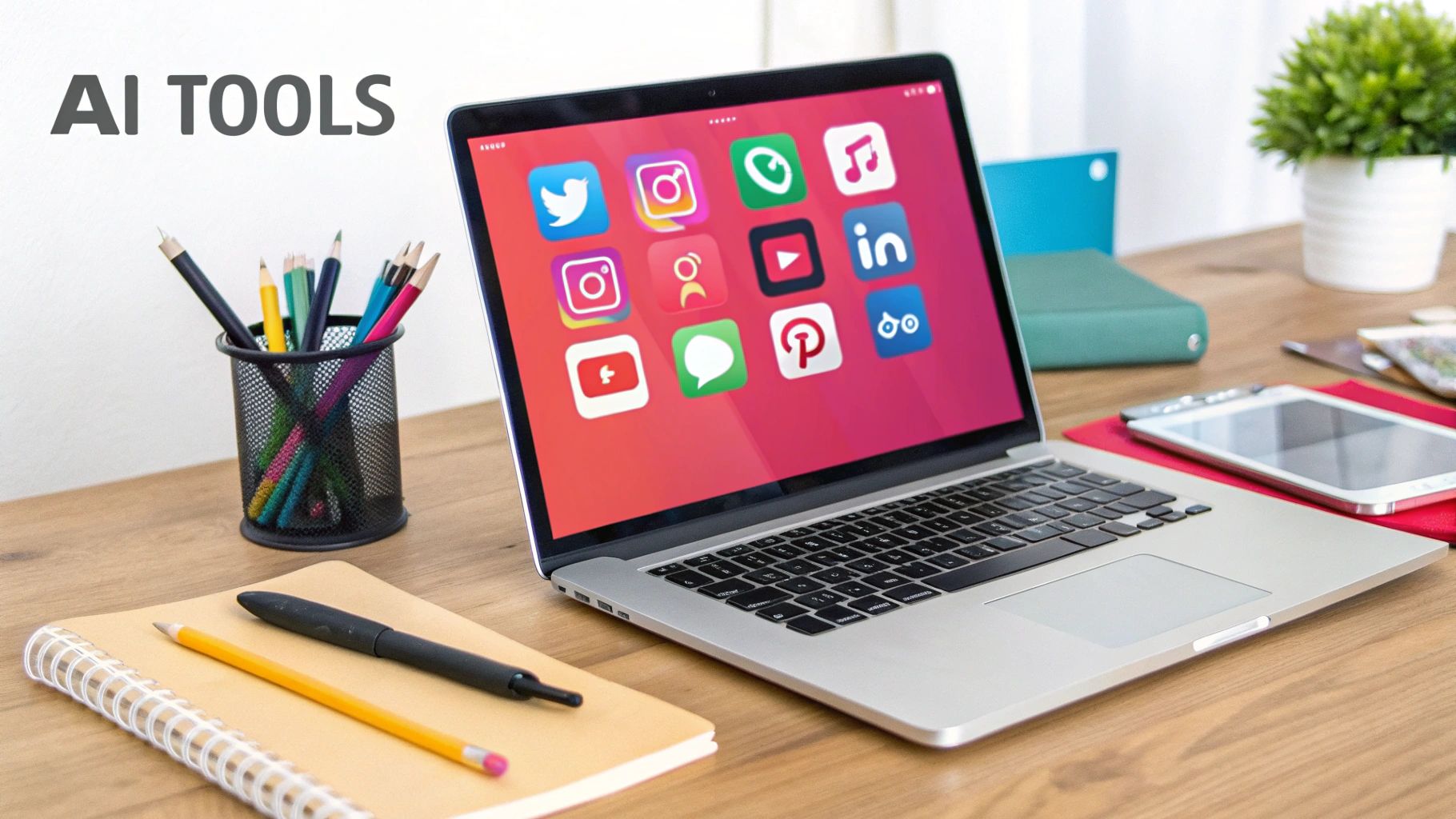
This is where AI influencer marketing really starts to flex its muscles. It flips the script on how we find creators, moving it from an educated guess into a data-backed science. Today’s AI platforms go way beyond just looking at follower counts. Think of them as super-smart analytical engines that dig deep into a creator's digital history to find the perfect match with almost surgical precision.
Instead of just asking, "How many followers do they have?" AI helps us ask much smarter questions. It dives into audience psychographics to see what they truly care about, runs sentiment analysis on past posts to check for brand safety, and looks at historical performance to find creators who actually get people to act.
The real objective here is to stop picking partners based on a gut feeling and start building a roster validated by hard data. AI gives you the proof you need to spend your marketing budget wisely, ensuring you’re teaming up with creators who don’t just look good on paper but deliver real-world results.
This deep-dive analysis is quickly becoming the norm. The use of AI in influencer marketing has exploded over the past few years. In fact, by 2025, it’s expected that around 60.2% of marketers will be actively using AI for finding influencers and optimizing their campaigns.
Uncovering Hidden Gems and True Authenticity
One of the best things about an AI-powered search is its knack for finding high-performing micro-influencers. These are the creators with smaller but incredibly loyal and engaged niche audiences—the kind you’d almost always miss with a manual search. AI spots these hidden gems by zeroing in on the quality of engagement, not just the size of the audience.
To do this, many platforms assign a unique ‘authenticity score’ to each creator. This isn't just a random number; it's a smart metric that weighs multiple data points to give you a clear picture of an influencer's real value.
- Audience Health: The AI scans for red flags like bot followers, suspicious follower growth spurts, or tell-tale signs of engagement pods, instantly weeding out fraudulent accounts.
- Engagement Quality: It knows the difference between a low-effort "nice pic" comment and a high-value interaction like a share or a meaningful conversation.
- Content Alignment: The tech analyzes a creator’s entire post history to make sure their voice, values, and visual style are a genuine fit for your brand.
Protecting Your Investment from Fraud
AI-powered fraud detection is your brand's best line of defense against wasted ad spend. It's like having a digital watchdog that protects your investment by sniffing out inflated metrics and bot activity. This guarantees your budget is spent on real influence, not just an illusion cooked up by follower farms.
And this isn't just for traditional influencers. AI tools are also a massive help in finding and vetting User-Generated Content (UGC) creators, who often use specialized top UGC creator platforms to find brands. AI can vet these creators just as rigorously, ensuring you get authentic content no matter who you partner with. By automating this deep vetting process, AI allows you to build a diverse and powerful creator program at a scale that was once impossible, all while keeping risks to a minimum.
The New Frontier of Virtual Influencers
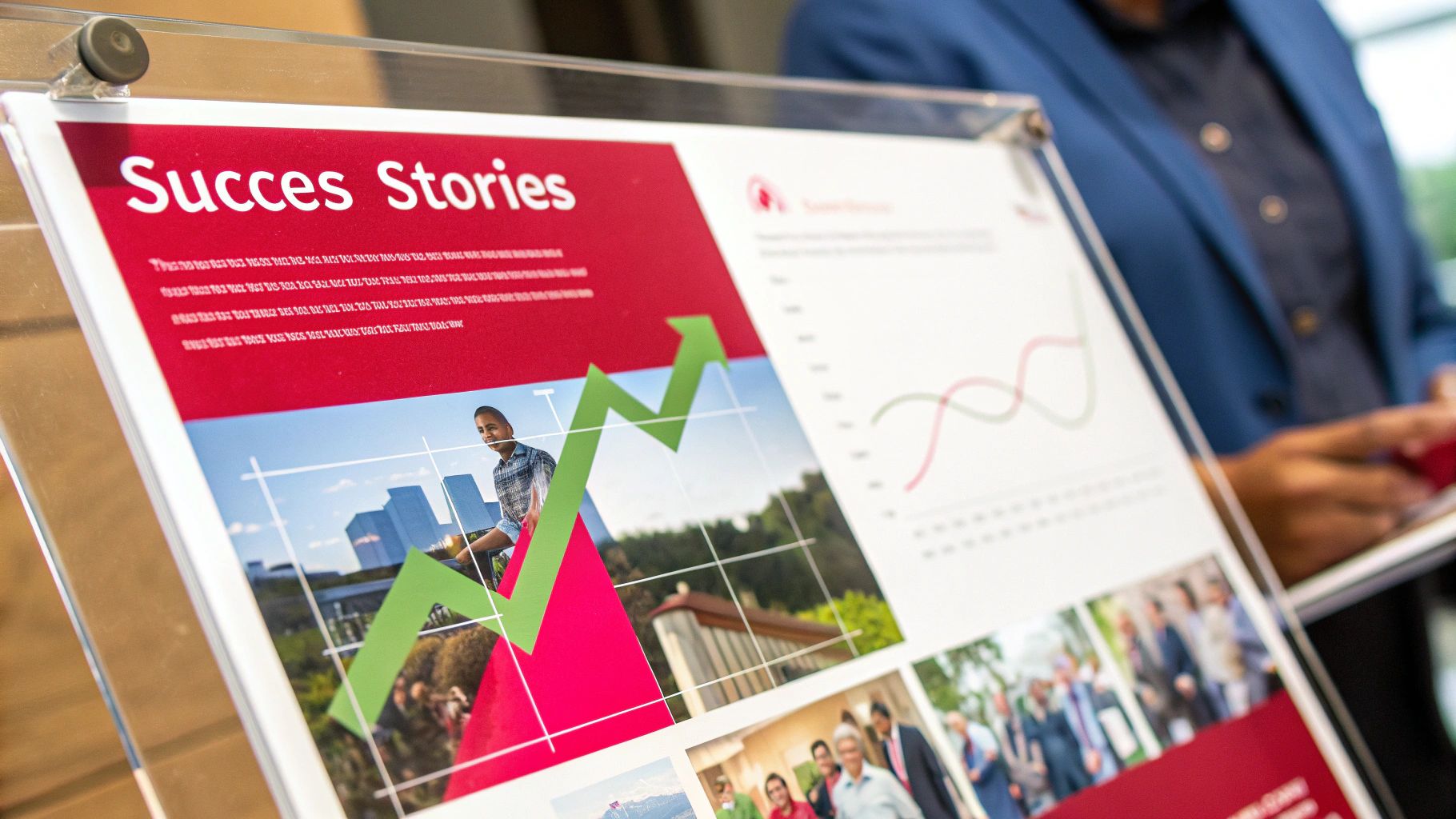
So far, we've talked about how AI helps find and vet human partners. But AI influencer marketing has also blazed a trail into a completely different territory: creating influencers from scratch.
These are virtual influencers—fully digital, computer-generated personalities dreamed up and run by creative teams using sophisticated AI. They aren't real people walking around, but their influence is absolutely real.
Just look at a digital star like Lil Miquela. She has millions of followers, lands partnerships with huge brands like Calvin Klein and Prada, and even drops her own music. To her audience, she’s every bit as real and engaging as any human creator. It’s a massive shift in the industry, giving brands a level of creative control that was simply unimaginable before.
Virtual influencers offer brands a compelling advantage: complete message control, 24/7 availability, and zero risk of human error or scandal. They are always on-brand because they are the brand.
This isn't some niche experiment, either. The virtual influencer market, a major part of AI influencer marketing, was recently valued at a staggering $4.6 billion. It's expected to jump another 26% by 2025. That kind of growth shows just how seriously brands are taking these digital personalities to connect with audiences in new, exciting ways. You can dig deeper into the numbers in this analysis of AI influencer trends.
Building Personas That Connect
The magic of a virtual influencer isn't just in the slick CGI. Their success comes down to forging a genuine bond with their followers. They aren't just flawless digital mannequins; they're fully-formed characters with unique personalities, detailed backstories, and even relatable struggles and triumphs.
This narrative-driven approach is what makes them so compelling, especially for younger, digital-native audiences who grew up online. It also challenges our old ideas about authenticity. For these fans, an influencer's "realness" isn't tied to their physical existence—it's about how consistent and relatable their persona is. Because they are so meticulously designed, virtual influencers can embody a brand’s core values with perfect precision.
Take another look at Lil Miquela’s profile. It’s a masterclass in blending a lifelike appearance with pure digital artistry.

This is what it looks like when you build a massive, engaged following by blurring the lines between the real world and a digital one.
The Unique Value for Brands
For brands, working with a virtual influencer solves a lot of the classic headaches that come with traditional creator partnerships. These digital personalities are changing how companies approach their marketing strategies from the ground up.
- Total Message Control: The script never gets flipped. Every post, story, and comment lines up perfectly with the campaign goals and the brand's voice.
- 24/7 Global Availability: A virtual influencer can be anywhere in the world, at any time. They can be programmed to speak any language, making global campaigns incredibly scalable.
- Freedom from Logistics: Forget coordinating travel schedules, managing personal conflicts, or worrying about a partner’s off-brand behavior. None of that exists here.
It's also worth noting that AI is starting to do more than just manage these personas. It's now being used to generate campaign ideas, draft creative briefs, and even optimize visuals for better engagement. This is a sneak peek into a future where the entire creative process, from idea to execution, is woven together with technology.
Your Playbook for Launching an AI Strategy
Knowing the concepts is one thing, but putting them into action is where the real growth happens. Jumping into AI influencer marketing isn’t about flipping a switch and overhauling your entire department overnight. It’s about being methodical. You’re looking to integrate AI in a way that makes your current work smarter, faster, and way more effective.
The idea is to build a simple framework that’s both ambitious enough to make a difference and achievable enough to actually get done. A solid plan will take you from being just curious about AI to using it with confidence, making sure every move is deliberate and lines up with what your brand is trying to accomplish.
Let's break it down into four critical stages.
Step 1: Define Your Key Performance Indicators
Before you even glance at a single AI tool, you need to be crystal clear on what success actually looks like for your brand. Vague goals like "increase brand awareness" just won't cut it. AI works best when you give it specific, measurable targets. What do you really want to move the needle on?
Think of your KPIs as your North Star. They'll guide every decision and turn your influencer program from a simple expense into a predictable way to drive revenue.
- Conversion Rate: Are you trying to drive sales directly from influencer content? Then you need to track clicks on affiliate links, how many times a unique discount code is used, and visits to your landing pages.
- Cost Per Acquisition (CPA): How much are you realistically willing to spend to get a new customer through an influencer? Nailing down a target CPA helps you instantly see if a partnership is financially smart.
- Audience Sentiment Score: Want to know if people’s perception of your brand is improving? AI can dig through comments and mentions to measure how people feel about you before, during, and after a campaign.
- Engagement Quality: It's time to move beyond likes. You need to measure things that matter, like the rate of shares, saves, and meaningful comments. This shows you how deeply the content is actually connecting with people.
Step 2: Select the Right AI Platform
Okay, now that you have your goals locked in, you can start shopping for the right tools. The market is packed with options, from massive enterprise-level platforms to smaller, specialized tools. The trick is to match a platform's strengths to your specific KPIs and, of course, your budget.
Think of this like building a toolkit. You don't need a giant, expensive toolbox if all you really need is a fantastic hammer. Start with the tool that solves your biggest headache first.
For instance, if your main goal is to uncover hidden gem micro-influencers that your competitors have missed, you'll want a platform with a powerful discovery and vetting engine. But if you're more focused on saving time, a tool that automates outreach and reporting might be the better fit.
Step 3: Integrate AI Into Your Workflow
Bringing in new tech shouldn't feel like a disruption. It should feel like giving your team superpowers. The smartest way to do this is to slowly weave AI into your existing workflow, not replace it. Start by letting AI take over the most draining, time-sucking manual tasks.
A great place to start is letting an AI tool handle the initial influencer discovery and fraud detection. This immediately frees up your team to do the human stuff—building genuine relationships and crafting killer creative briefs. That's the kind of work AI can't replicate. As you build out your plan, it's also smart to think about how these tools can fit into your bigger customer acquisition strategies leveraging AI tactics.
Step 4: Measure and Predict with AI Analytics
Finally, it's time to close the loop. Use AI analytics not just to look back at what happened, but to predict what will happen next. Modern AI platforms can sift through all your campaign data to pinpoint exactly which creator types, content styles, and messages deliver the best results.
This changes everything. Reporting is no longer a reactive chore; it becomes a proactive strategy session. You’ll get insights that help you fine-tune your next campaign, double down on your best-performing partners, and consistently improve your ROI. This data-driven feedback loop is what will power a successful AI influencer marketing strategy for the long haul.
Answering Your Questions About AI in Marketing
It's completely normal to have questions—and maybe a little bit of hesitation—when you first think about bringing AI into your influencer marketing. It’s a powerful new way of working, and you want to be sure you understand the practical side of it before diving in.
My goal here is to clear up the confusion and tackle the most common concerns marketers have. Let's get these questions answered so you can feel confident moving forward.
Isn't AI Influencer Marketing Too Expensive for Small Businesses?
Not at all. While you'll definitely find enterprise-level platforms with price tags to match, the world of AI influencer marketing tools is surprisingly diverse. Many of the best platforms today offer different pricing tiers, and some even have free plans or features that are a perfect starting point for smaller teams.
The real key isn't buying the biggest, most expensive tool; it's about finding the right one. If you focus on a platform that solves a single, high-value problem for you—like finding the right influencers with pinpoint accuracy or automatically flagging fake followers—the return on your investment can be huge. For a small business, the hours you save and the ad dollars you don't waste on fraud often make these tools pay for themselves.
AI isn’t some all-or-nothing commitment. It's about strategically picking the tools that fix your biggest headaches. Even on a tight budget, that can be a game-changer.
Will AI Just Replace the Human Side of Influencer Relationships?
This is probably the biggest fear I hear, and the answer is a hard no. AI is here to make you better at your job, not to do your job for you. It’s brilliant at sorting through massive amounts of data, spotting patterns, and handling the repetitive, time-sucking tasks that get in the way of real marketing work.
Here’s how I like to think about it: AI takes care of the "what" (what the numbers and data are telling you), so you can focus on the "why" (why this specific creator is the perfect creative partner for your brand). The tech frees you up to do what people are irreplaceable for:
- Building real, genuine connections with creators.
- Brainstorming and negotiating creative ideas that feel authentic and exciting.
- Crafting big-picture campaign strategies that blend hard data with your own human intuition.
Honestly, the most successful campaigns I've seen are the ones that nail this balance. The technology gives you the intelligence, but it’s the people who build the relationships that make it all work.
How Do You Actually Measure the ROI of an AI-Driven Campaign?
This is where AI really shines. It makes measuring your return on investment far more accurate than the old-school methods ever could. You get to move past fuzzy metrics like likes and follower counts and focus on the stuff that actually affects your bottom line. Modern AI platforms are built from the ground up to track deep performance data with incredible precision.
For instance, AI can directly link sales to specific influencer posts, monitor conversion rates from unique discount codes, and even analyze how audience sentiment about your brand changes over the course of a campaign. Some of the more advanced tools can even give you a projection of a partnership's potential ROI before you've spent a single dollar. This gives you a complete, financially sound picture of your campaign's true impact, making it easier than ever to prove the value of your work.
Ready to stop guessing and start building influencer partnerships that are backed by data? JoinBrands gives you the AI-powered tools to find the perfect creators, run your campaigns efficiently, and prove your ROI with total confidence. Discover how our platform can accelerate your brand’s growth today.
